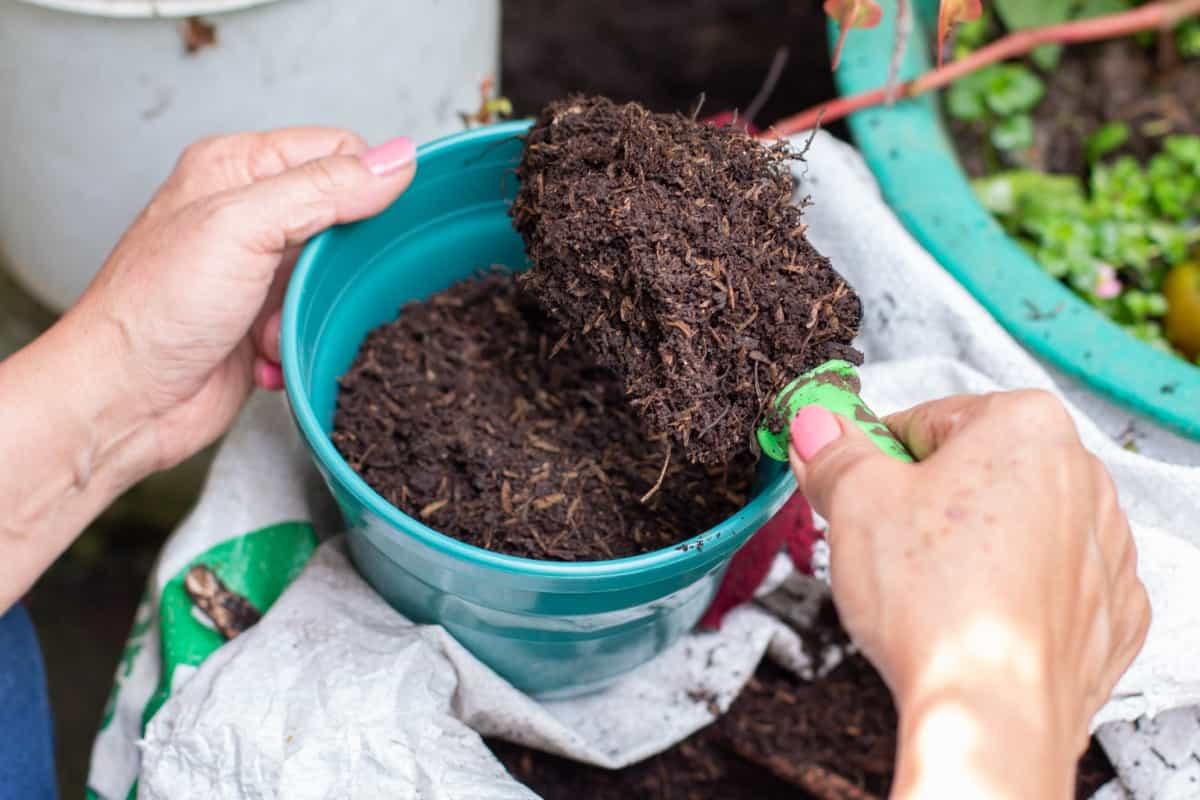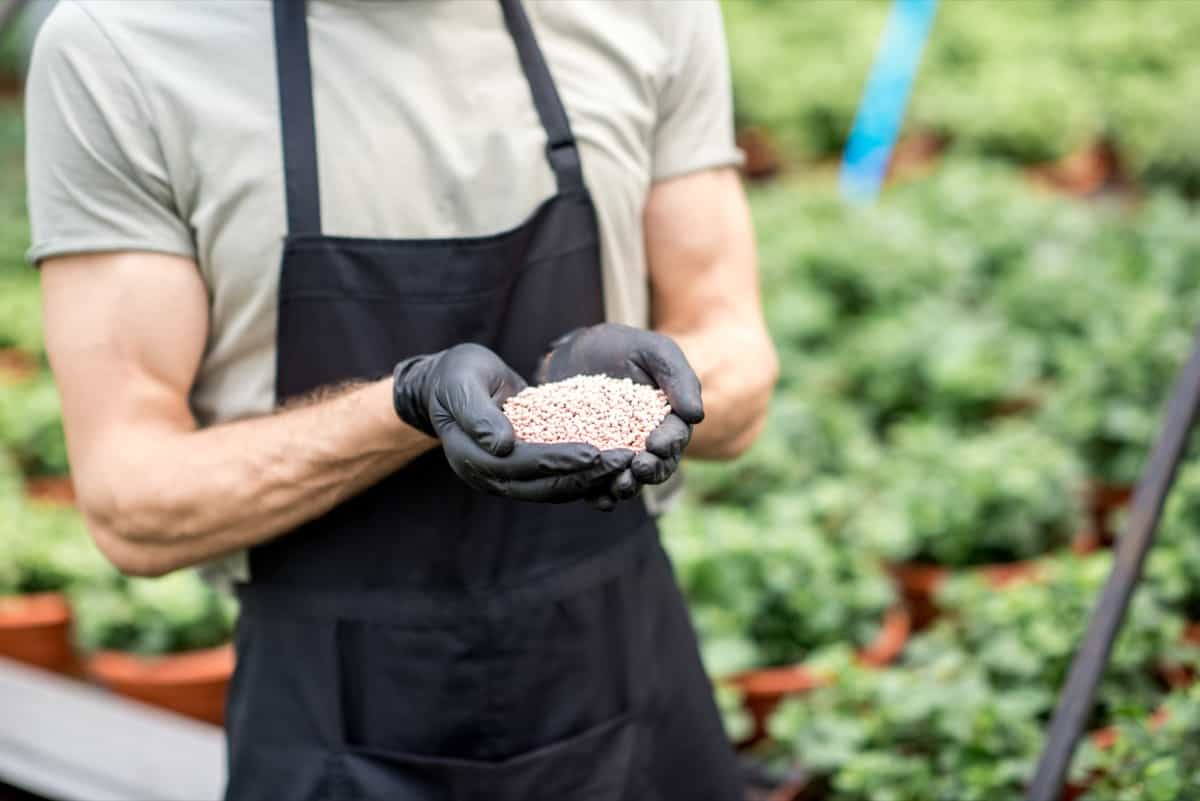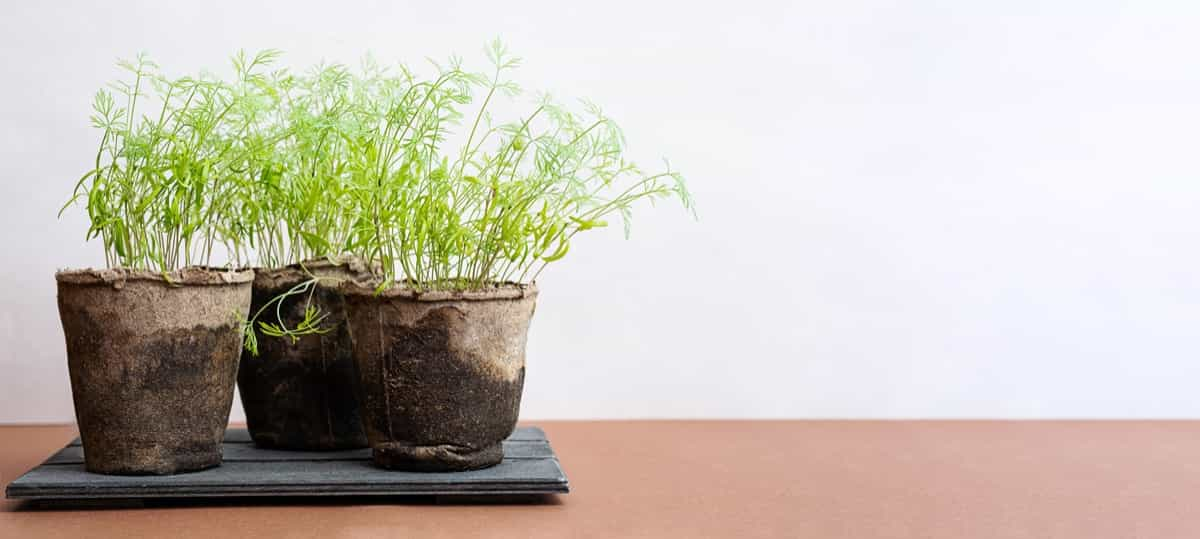Dill (Anethum graveolens) is a versatile and aromatic herb commonly used in culinary dishes, and it can thrive in pots or containers with the right care and attention. Choosing the best fertilizer ensures your dill plants grow healthy and flavorful. This guide will explore various options for fertilizing dill plants in pots, including organic, natural, and homemade fertilizers, NPK ratios, and when and how to apply them.

Best Fertilizer for Dill in Pots
Understanding the Nutritional Needs of Dill Plants in Pots
Dill plants grown in pots have specific nutritional requirements for healthy growth. They thrive in well-draining soil rich in organic matter. Dill benefits from a balanced fertilizer with a higher nitrogen content to promote lush foliage development. To ensure optimal growth, consider supplementing with a slow-release, water-soluble fertilizer every 4-6 weeks during the growing season. Monitoring soil pH and maintaining it between 5.5 and 6.5 helps facilitate nutrient absorption, ensuring a thriving dill plant in a pot.
Factors to Consider When Choosing Fertilizers for Dill Plants in Pots
- NPK Ratio: Choose a balanced fertilizer with a ratio like 10-10-10 for overall growth or higher nitrogen (first number) for more foliage.
- Slow-Release vs. Liquid: Slow-release granules provide nutrients over time, while liquid fertilizers offer immediate absorption. Match the type to your Dill’s needs.
- Organic vs. Synthetic: Organic fertilizers enhance soil health, while synthetic ones deliver rapid nutrients. Decide based on your gardening philosophy.
- Microelements: Ensure the fertilizer includes micronutrients like iron, magnesium, and manganese for Dill’s specific requirements.
- pH Levels: Check your soil’s pH and select a fertilizer that can adjust it if necessary.
- Frequency: Follow recommended application rates and schedule for optimal dill growth without over-fertilizing.
Organic Fertilizers: a Sustainable Choice for Dill Plants in Pots
Organic fertilizers are an eco-conscious choice for nurturing dill plants in pots. These sustainable options, derived from natural sources like compost, animal manure, or seaweed, enrich the soil while minimizing environmental impact. They promote soil health, enhance nutrient absorption, and foster robust dill growth without harmful chemicals.
In case you missed it: Best Fertilizer for Mint in Pots: Organic, Natural, Homemade, NPK Ratio, When and How to Apply

Organic fertilizers also support beneficial microorganisms in the soil, creating a harmonious ecosystem in your potted garden. Choosing organic fertilizers aligns with eco-friendly principles, ensuring a thriving dill crop while preserving the planet.
Natural Fertilizers for Dill Plants in Pots: for Environmentally-friendly Options
These eco-conscious options, sourced from materials like compost, fish emulsion, or bone meal, provide essential nutrients without harming the environment. Natural fertilizers enhance soil quality, stimulate dill growth, and minimize chemical runoff. They support a healthy, biodiverse ecosystem in your potted garden, fostering sustainable plant development. By opting for natural fertilizers, you contribute to a greener, more environmentally responsible gardening practice while enjoying a bountiful dill harvest.
Homemade Fertilizers for Dill Plants in Pots: Diy Solutions for Optimal Plant Health
Elevate your potted Dill’s vitality with homemade fertilizers, ensuring optimal plant health. Crafted from kitchen scraps, such as banana peels, eggshells, or coffee grounds, these DIY solutions offer a cost-effective and sustainable way to nourish your Dill. Homemade fertilizers enrich the soil with essential nutrients, fostering robust growth and flavorful dill leaves.
They reduce waste and promote recycling in your gardening routine. By creating your fertilizers, you personalize nutrient blends for your Dill’s specific needs, resulting in a thriving, eco-friendly potted garden that’s as rewarding as environmentally responsible.
Synthetic Fertilizers for Dill Plants in Pots
Pros: Synthetic fertilizers provide quick nutrient uptake, promoting rapid growth and higher yields in dill plants. They are readily available and cost-effective, making them convenient for potted plants.
Cons: Overuse can lead to soil and water pollution, harming the environment. They may disrupt the soil’s natural microbial balance, reducing long-term soil fertility. Frequent application can also result in nutrient imbalances, potentially harming dill plants.
Slow-release Fertilizers for Dill Plants in Pots
Slow-release fertilizers offer an extended nutrient supply, ensuring sustained growth for dill plants in pots. They reduce the risk of nutrient runoff and environmental harm. However, they tend to be pricier upfront and may not deliver immediate growth boosts. Proper application is crucial for optimal results.
Balanced NPK Ratios for Dill Plants in Pots
Choosing a balanced NPK (Nitrogen, Phosphorus, and Potassium) ratio is vital for dill plants in pots. A balanced fertilizer composition, like 10-10-10, supports overall plant health, leafy growth, and robust root development. Tailoring nutrient ratios to specific growth stages helps maximize dill yield and flavor. Avoid excessive nitrogen, which can lead to excessive foliage at the expense of fruiting.
In case you missed it: Fertilizing Potted Thyme Plants: Organic, Natural, Homemade, NPK Ratio, When and How to Apply

Micronutrients: Enhancing the Health and Growth of Dill Plants in Pots
For optimal development, Dill requires essential micronutrients like iron, manganese, and zinc. Ensure a balanced soil pH (around 6.0) to facilitate nutrient uptake. Incorporate organic matter and well-composted soil to improve micronutrient availability. Regularly monitor the plants for signs of deficiency, such as yellowing leaves or stunted growth. If deficiencies are observed, consider foliar sprays of micronutrient-rich solutions to correct the imbalance.
Liquid Fertilizers: Convenient Options for Feeding Dill Plants in Pots
Liquid fertilizers offer convenience and rapid nutrient absorption for potted dill plants. When diluted in water, these formulations provide a quick nutrient boost to fuel Dill’s growth. Choose a balanced liquid fertilizer with a balanced N-P-K ratio (nitrogen, phosphorus, and potassium) and apply it every four weeks during the active growing season. This method reduces the risk of overfeeding and ensures your Dill receives the nutrients it needs without hassle. Liquid fertilizers simplify the process, keeping your potted Dill healthy and vibrant with minimal effort.
Seasonal Fertilization: Adapting Nutrient Requirements for Dill Plants in Pots
Dill plants in pots require seasonal adjustments in fertilization to meet their changing nutrient needs. During the active growth season in spring and summer, provide a balanced fertilizer with higher nitrogen levels to support foliage development.
In contrast, as dill transitions to flowering and seed production in late summer and fall, switch to a lower-nitrogen, higher-phosphorus fertilizer to promote flowering and seed formation. Adjusting your fertilization strategy according to the plant’s growth stage ensures optimal dill health, robust flavors, and a bountiful harvest from your potted dill plants throughout the year.
When and How to Apply Fertilizers to Dill Plants in Pots: Timing is a Key
Start by using a balanced, slow-release fertilizer with a ratio like 10-10-10 or 14-14-14. Apply it when transplanting dill seedlings into pots or when planting seeds. Then, follow up with a light application every 4 weeks during the growing season, which typically begins in spring and lasts until late summer. Be cautious not to over-fertilize, as Dill prefers slightly lean soil. Water thoroughly after fertilizing to prevent root burn. By timing your fertilizer applications properly, you’ll promote robust dill growth and ensure a bountiful harvest.
Table for Fertilizing Potted Dill Plants: Organic, Natural, Homemade, NPK Ratio And When to Apply
| Type of Fertilizer | Fertilizer | When to Apply |
| Organic | Compost, Worm casting | Spring and Summer |
| Natural | Animal manure, Bone meal | As side dressing |
| Homemade | Banana Peels, Coffee grounds | As side dressing |
| NPK ratio | 10-10-10 or 14-14-14 | Three splits/ season |
| Water soluble | Fish Emulsion, Seaweed Extract | During growing season |
| Slow release | In the form of Spikes | During growing season |
In case you missed it: Best Vermont Container Plants: For Vegetables, Flowers, Herbs in Winter, Shade, Full Sun

Conclusion
Organic, slow-release fertilizers promote healthy dill growth and enhance the flavor of your harvest, while homemade compost tea and natural supplements can add valuable nutrients without synthetic chemicals.
- Feed Your Flock for Less: Top 10 Tips to Save on Chicken Feed
- Ultimate Guide to Ossabaw Island Hog: Breeding, Raising, Diet, and Care
- Hatching Answers: The Top 10 Reasons Your Chickens Aren’t Laying Eggs
- Eggs and Economics: Breaking Down the Cost of Raising Backyard Chickens
- Defend Your Greens: Proven Methods to Keep Iguanas Out of Your Garden
- Ultimate Guide to Cinnamon Queen Chicken: A Comprehensive Guide for Beginners
- Ultimate Guide to California Tan Chicken: Breeding, Raising, Diet, Egg-Production and Care
- Ultimate Guide to Marsh Daisy Chicken: Breeding, Raising, Diet, and Care
- 10 Types of Chicken Farming Businesses You Can Start for Profits